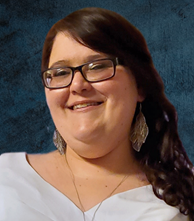If you rarely work with members of the Deaf or Hard of Hearing (DHOH) community, you may wonder how to accommodate your client, customer, or patient. For example, are best practices for working with an American Sign Language (ASL) interpreter different from interpreters for spoken languages?
Don’t worry – here are a few tips to help your interpretation session run smoothly:
Speak directly to your client/patient, not the interpreter
People often have the urge to speak to the person who understands them (the interpreter) rather than the person they ultimately need to communicate with. For example, someone may ask the interpreter, “Can you please ask Mrs. White what she needs help with?” instead of simply asking the question to Mrs. White as they would for another customer. This interrupts the interpreter’s role as a conduit and can make your client feel ignored. For best results, speak in the first person while facing the DHOH customer.
Use eye contact and facial expressions to improve communication
Hearing people may not be used to prolonged eye contact; most tend to make eye contact for a second, look away, and repeat. But Deaf communication relies heavily on eye contact: as the blog ASLDeafined explains, “In the Deaf community, once you break eye contact, you are no longer listening to the other person. This is considered to be rude and disrespectful.” Make an effort to look your DHOH client in the eye while conversing, while understanding that they will need to watch both you and the interpreter to understand their signing.
Remember that your facial expressions can also modify the message. For example, maintaining a stern face while delivering happy news may cause confusion until the ASL interpreter clarifies the message. Try to match your expressions to what you’re trying to tell them.
Avoid exaggerating your speech
Another way people may inadvertently insult DHOH clients is by changing the way they speak. You don’t need to speak in a slower, louder, or over-articulated way. Using a normal tone and pace can help you avoid being perceived as condescending to the DHOH person. The interpreter will ask you to slow down if you speak too quickly.
Create a respectful environment
You can help your conversation flow more freely by ensuring everyone involved can easily see one another. If you’re meeting in person, select a location with good lighting and enough space for all participants to be comfortable. For group conversations, inform all participants that they’ll need to speak one at a time so the interpreter can convey each person’s message without confusion. Keep in mind—the interpreter is not a personal assistant or advocate for the deaf individual and should only be asked to facilitate communication.
If you’re unsure about something, ask!
Experienced ASL interpreters and DHOH people most likely have heard your question before, so there’s no need to be shy about asking for clarification. Like you would with any other client, asking how to make their experience more comfortable shows you want to provide excellent customer service.
Additional Resources
Tips for working with DHOH clients/patients:
- DHOH 101: Things to know when working with the Deaf & Hard of Hearing Community
- Different Ways to Communicate with the Deaf and Hard of Hearing
- Written Communications for the Deaf and Hard of Hearing
- Rights and laws for the Deaf and Hard of Hearing community
- Deaf/HOH during the Pandemic: Challenges for Accessing Healthcare
Tips for working with interpreters:
Need help accessing ASL or spoken language interpreters?
Contact us at getstarted@cyracom.com for all of your language services questions.










